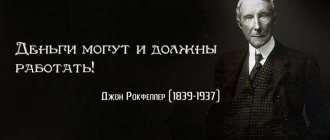History of writing
The novella was written in March 1916, when Bunin was on the Vasilyevsky estate in the Oryol province. It all started when the Moscow publishing house Russkoe Slovo asked him to send a short story for the Easter issue of their newspaper. Ivan Alekseevich did not mind sharing his short stories, since he valued friendly relations and generous fees, but the writer did not have any finished works. As a result, he decided to quickly put on paper the love story that had been languishing in his mind for a long time about the high school student Olya.
The very idea of the work came to Bunin much earlier. One day he was walking through the cemetery in Carpi, where he unexpectedly came across the grave of an unfamiliar girl. The photograph of a blooming, cheerful person created a sharp contrast with the oppressive atmosphere of this place, which shocked the writer to the core. His imagination immediately painted a picture of this girl’s life - and so the plan to create a work called “Easy Breathing” was born in his head.
According to Bunin himself, there were deeper preconditions for writing the novella. In deep childhood, he witnessed the death of his sister Sasha, whom the whole family loved very much. Childhood trauma deeply shocked the boy, forever leaving in his head images of winter, cloudy snow, an innocent girl and death, which were reflected in the future work of art.
Analysis of the work
Stylistic features
Bunin left his mark on literature both as a prose writer and as a poet. The language of his short stories is very poetic, the author’s style of writing is recognizable, and it is not without reason that such a concept as “Bunin’s style” has become entrenched in literary criticism. “Easy Breathing” reflects the characteristic features: simplicity and brevity are combined with figurativeness, metaphor, and “airiness” of the text.
Portrait descriptions play an important role in the story, complementing and revealing the images of the character. It is no coincidence that acquaintance with Olya Meshcherskaya begins with her “gravestone portrait”. Punctuation is a means of expression. The text is replete with unfinished sentences and ellipses.
Conceptual and content features
Bunin's work is meaningfully correlated with the concept of “living life”, popular in the literature and philosophy of that time. It is based on the idea of the value of the very essence of human existence, and “liveness” is understood as its indispensable attribute.
Problems of life and death, love and vice are intertwined on the pages of Bunin’s short story. By and large, the author poses the question of how to live correctly, and does not give a clear answer to it.
The plot in the story is secondary. It is deliberately presented in “fragments”, through a sequence of vivid episodes. Some literary scholars note that the story lacks "interest in the plot as such." The central metaphor “Easy Breathing,” according to the literary critic Vygodsky, determines the structure of the story. “To be extremely alive means to be extremely doomed” - in this phrase the ideological specificity of the work is expressed by researcher S. Vayman.
Genre
“Easy Breathing” is a prose work of small literary form, that is, a story. The term “short story” is often applied to Bunin’s works. The techniques used, the mixture of “two narrative plans”, the thematic, compositional and conceptual line of the work allow us to attribute it to the literature of modernism.
Briefly about the history of creation
Bunin conceived the story “Easy Breathing” when he found himself in a situation similar to the one described at the beginning of the story. The writer was walking through the cemetery and his gaze stopped on a tombstone with a cross. A young, very beautiful girl, glowing with life, looked at him from the portrait. In such a situation, a person involuntarily thinks about the question, why did this beauty leave this world so early, what is the reason for such a fleeting life? A creative and imaginative person just couldn't help but start imagining what her life could be like.
The text of the story was born in the Oryol Province, in the village of Vasilyevo, where the author lived at that time. The writer received an offer to publish in the magazine “Russian Word”, with the editor of which Ivan Alekseevich was on good terms. Bunin did not have a finished work, the cemetery impressions came to life in his head, and the story of the high school student Olya Meshcherskaya poured out onto paper; it was published on the pages of the magazine in 1916.
Summary
The story begins with a description of the cemetery where the grave of the schoolgirl is located. The narration immediately stops at describing the heroine’s appearance - lively eyes, a joyful smile. From the first lines, the reader immediately understands that the story is about a cheerful, cheerful, optimistic girl . Then the story moves on to Olya’s childhood and adolescence - until the age of 14 she was an ordinary student, but then she “blossomed”, becoming one of the most popular schoolgirls among boys and classmates.
At the beginning of the story, Meshcherskaya appears as a very prosperous and happy person - she dances the best at the ball, is an excellent ice skater, and has many friends and boyfriends. In the last winter of her life, she practically “goes crazy with fun,” for which the head of the gymnasium calls her for a conversation. During the conversation, the girl admits that she is “already a woman” thanks to Malyutin.
After a frank conversation, there follows a scene at the station, where a Cossack officer shoots Olya. In court, he argues that she herself brought him to this point, vowing to be his wife and breaking her promise, and also offering to read the diary where she seduced another man. Then follows the story of her “fall” with Malyutin. At the end, the action moves again to the cemetery, where a classy lady visits Meshcherskaya’s grave.
Characters of the story and their brief descriptions.
Main characters
Olya Meshcherskaya is a 16-year-old high school student from a wealthy family who quickly developed into a beauty. She is graceful, light, cheerful, dances beautifully, and her charm requires no effort. Not only young people love the charming Olya; elementary school students dote on her. The key feature of the schoolgirl was the so-called “light breathing”, similar to the breath of spring, its spontaneity.
The vivid image of Olya Meshcherskaya, to which the author himself does not give any assessment, evokes conflicting feelings. She gained early experience, perhaps, through the fault of an elderly womanizer. It is symbolic that, walking through the garden with young Olenka, Malyutin compared himself to Faust, and her to Margarita. However, the cheerful schoolgirl did not stop there. Of course, Olya Meshcherskaya is vicious, but at the same time she is childishly naive and sincere. In this contradiction she is even more seductive.
The writer unobtrusively shows that the main thing in it is liveliness. The eyes on the cemetery medallion are joyful and “amazingly alive.” Olya looks at the boss “clearly and vividly, but without any expression.” She doesn't think about anything. Bunin admitted that this “lack of thinking” is the main secret of “easy breathing.” In the heroine, morality and reason are dominated by a certain spontaneity, a thirst for life in all its fullness. The payback for this thirst was terrible - Olga was shot by another lover. It is painfully difficult to connect the captivating Olya Meshcherskaya with death, with a gunshot at the station. The image of the heroine is charming and tragic at the same time.
The headmistress of the gymnasium is a typical headmistress, a woman of strict rules. In her surprisingly tidy office hangs a portrait of the Tsar - a symbol of power. This gray-haired, but still youthful lady vigilantly monitors the behavior of the schoolchildren entrusted to her. She believes, not without reason, that Meshcherskaya behaves unacceptable for a gymnasium student. The image of the boss contrasts with the main character and sets her off.
The curious situation is that the boss’s brother seduced her ward, to whom she periodically lectures. Olya, however, turns a deaf ear to the teachings of the official lady. Their dialogue in the story is similar to a duel. To the madame’s reprimand regarding her twenty-ruble shoes, expensive combs and hairstyle like a woman’s, Olya easily and calmly retorts that she is already a woman through the efforts of the respected madame’s brother. With this lightness and spontaneity, the main character opposes the rules and decency, embodied in the image of the headmistress of the gymnasium.
Cool lady - teacher in Olya Meshcherskaya's gymnasium class, a small woman. This is a dreamy old maid who lives in fiction, replacing her real life.
Theme of the novella
The central theme of the work of art is love. It is revealed to the reader through the prism of the actions and behavior of the characters - first of all, the main character Olya Meshcherskaya. It is interesting that the role of love in the story departs from the classical canons - it acts as a destructive, destructive, uncontrollable force, and not a kind, pure and bright feeling. Olya's feminine attractiveness almost drives the young high school student Shenshin to suicide, and she herself dies at the hands of her rejected lover.
Side by side with love, the work reveals the theme of the value and beauty of life. Through the image of Meshcherskaya, Bunin is trying to show that you need to enjoy the world today, look at everything more simply and not limit yourself to rules. But it is important not to overdo it, taking the path of immorality and irresponsibility, otherwise you can share the sad fate of Olya, whose spontaneity and openness led to her death.
An important step in revealing this theme is the introduction of the image of a classy lady and contrasting her with the main character. This “elderly girl” and “ideological worker” is constrained by rules and traditions, but deep down she dreams of learning to live as easily and directly as Olya. This becomes her unattainable ideal and object of obsession. The contrast between her dreams and reality in “Easy Breathing”, the contrast of a joyless existence with Meshcherskaya’s short but bright and full of pleasures life best reveals the theme of the transience of existence and the importance of enjoying today.
Subject
The theme of love is central to the story “Easy Breathing.” The author reveals her through the prism of the character and behavior of Olya Meshcherskaya - an incredibly cheerful, charming and spontaneous girl.
For Bunin, love is, first of all, passion. All-consuming, frantic, destructive. It is not surprising that in the work, death is always the faithful companion of love (the young high school student Shenshin was on the verge of suicide from unrequited love for Olya, and the main character herself became the victim of a distraught lover). This is the peculiarity of Ivan Alekseevich’s concept of love.
Despite the immoral actions of the schoolgirl, the writer, nevertheless, does not criticize her behavior. On the contrary, Olya’s inexhaustible vital energy, her ability to see life only in joyful, bright colors, disarming charm and femininity attracts the author. True female beauty does not lie in external features, but in the ability to inspire and charm people. This is the main idea of the work.
Meshcherskaya's carelessness and some superficiality are just the other side of her nature. And the girl’s main problem is that no one from her close circle could teach her to balance between ease and “fluttering” through life and responsibility for her actions.
Such indifference becomes the cause of the girl’s death. However, death is not able to take the charm of youth with it into the abyss - the “light breath” dissipates throughout the universe, to soon be reborn again. The writer leads readers to this conclusion, thanks to which the work does not leave a heavy aftertaste.
Main issues
“Easy Breathing” reveals the writer’s views on many modern problems. The main ones:
- Balance between passion and decency. The author clearly sympathizes with Olya, who chooses the first and turns a blind eye to the second. But such a choice leads her to a sad outcome, which reflects the real state of affairs.
- Human freedom. Bunin portrays moral restrictions and obsession with traditions in a negative light, contrasting them with the open and spontaneous Meshcherskaya, who does not care about her reputation. He believes that society should not invade a person’s intimate sphere.
- Social inequality. Olya's conflict with both of her lovers stems from the fact that they are “from different classes,” and this leads to great tragedies.
- Boredom and dullness of life. The desire to break out of the routine of life and live in your dreams is the main characteristic of the cool lady character. Olya manages to do it by “breathing lightly,” but with dire consequences.
The author briefly dwells on the problem of the importance of family. Some quotes from Meshcherskaya hint at problems with her parents, and her upbringing speaks of abandonment and inability to live in the cruel outside world. None of the elders taught the heroine responsibility and standards of decency.
Image of Olya Meshcherskaya
The most developed and revealed in the short story is the image of the main character - high school student Olya Meshcherskaya. She embodies Bunin's ideal of feminine charm. Character traits inherent in her:
- ease;
- immediacy;
- openness;
- optimism;
- the desire to live for today and look for joy in everything;
- frankness;
- charm;
- femininity;
- irresponsibility;
- inability to take the feelings of others seriously;
- carelessness;
- frivolity;
- frivolity.
The author pays great attention to the appearance of the heroine. She is very beautiful, slender and graceful, which is why she has many suitors at a young age. corresponds to such lightness and grace - she is not constrained by any rules, she does what she wants , without thinking about the opinions of others. Despite the ambiguity and some immorality of her actions, it is almost impossible to condemn her because of her naivety and openness.
Olya's fatal flaw is her inability to find a balance between feelings and reason, freedom and constraint, reality and dreams. She is too frank and does not hesitate to tell the cruel truth, for which she ultimately pays with her life. The tragedy of the heroine lies in the fact that her defining character traits - spontaneity, love of life, faith in her dreams - ultimately lead to her death. She acts according to the will of feelings, not reason, for which she pays at the end of the story.
Characteristics of other heroes
“Easy Breathing” is a short novella that cannot boast of a rich cast of characters . Most of them are to some extent opposed to the image of Meshcherskaya:
- Alexey Mikhailovich Malyutin is a 56-year-old officer, a family friend of the Meshcherskys, a handsome elderly man. One day he is left alone with a girl at home, does not hold back and seduces her. Despite the initial desire to “become a woman,” Olya feels disgust for him, which she openly admits. Later, Malyutin dies in the Russian-Japanese War, in the same winter as the main character.
- The Cossack officer is Olya's lover, a mysterious and dark character, about whose motives little is known. He is described as an ugly and poor man. The nuances of his relationship with the main character remain behind the scenes, but it is clear that he took the romance very seriously - so much so that he took the life of his beloved after learning about the non-reciprocity of his feelings. For Meshcherskaya herself, their relationship was something of an experiment or a passing hobby, while the officer wanted a wedding, which became the cause of the conflict and the subsequent death of the girl.
- The headmistress of the gymnasium is a strict, correct woman who condemns Olya’s flighty behavior. Shackled by her own moral teachings and attitudes, she turns out to be completely disarmed by Meshcherskaya’s spontaneity and frankness, despite her position of power in relation to the schoolgirl. The conversation with her, despite its short duration, is often called one of the most memorable moments of the story.
- A cool lady is a middle-aged woman who lives in dreams instead of reality. For her, Olya becomes something of an ideal, and she considers her cruel fate to be the embodiment of the injustice of the world. After Meshcherskaya’s death, a classy lady regularly visits her grave, indulging in sentimental reflections.
The uniqueness of each character in the story lies in the ambiguity of his motives. The psychology and deep thoughts of the characters are left behind the scenes, which allows the reader to understand them in their own way.
Features of the composition
The main feature of the story's composition is the lack of chronological sequence. The text begins with a description of Olya's grave, then jumps to a description of her childhood, then moves on to her last winter. After all this, a conversation with the boss follows, where some of the key details of the plot are revealed, including the heroine’s connection with Malyutin. Then the work returns to the news of the death of the schoolgirl. The end is an insignificant at first glance episode from Meshcherskaya’s daily life, where she tells her schoolgirl friends about the meaning of female beauty.
Thanks to the sudden change in place and time of action, the author managed to maintain a feeling of lightness. Despite the unfair blows of fate and multiple dubious or tragic events, the short story does not burden the reader with heavy thoughts - he becomes detached, distanced from the heroes and their problems.
Another feature of the composition is the swiftness of everything that happens, which emphasizes the lively and spontaneous nature of the main character. Events happen so quickly that the reader has practically no time left to analyze the essay - he, like Meshcherskaya, perceives it with his feelings, and not with a cold mind. This corresponds to the picture of Olya’s life - she always “lived in the moment”, without thinking about the long-term consequences of her actions.
Another interesting detail is that the author actually begins his work with a denouement, depriving it of an unexpected twist in the form of the death of the heroine. The reader knows that a sad outcome is inevitable, so he better concentrates on the reasons and events leading to the tragic ending. Olya’s predetermined doom, the unimportance of her actions and decisions help convey the idea and meaning of “Easy Breathing” - it was the desire to live to the fullest, have fun and not pay attention to the consequences that led the girl to a sad outcome.
LiveInternetLiveInternet
“Breathing is a great pleasure. One breath is enough to always be happy and enjoy life. It's enough to be alive. If the source of all things were not in this breath, there would be neither man nor the world.”
Peace - Breath. The love passion of lovers, the Beloved Herself is Just Breathing. (Rubaiyat of Iraqi). Talk to the delight of my heart - To the one who is like the morning breeze. Our love flared up like the morning dawn - In one breath. (Saadi).
Sufis believe that God first created hearts, making them the fountain of His spiritual knowledge. Then He created the hidden centers of superconsciousness (asrar), as the focus of Divine Unity (tawhid) (Shimmel, op. cit., p. 192) Ruzbihan on Breath: “Breaths are fragrant breaths born on the Boreas of love intimacy and spreading the revelation of the Divine Essence and Properties, fragrant with the fragrance of the gardens of the Invisible spheres and the spheres of the Invisible among the Invisible, conveying the most precious and secret knowledge, and filled with an ecstatic vision of time without beginning and end. God proclaims: “I swear by the dawn when it breathes” (Quran 81:18) According to the Arif, “Breathing is the incense of the Divine from the incense burners of the Holy Spirit, which carries the soft breezes of Divine Unity, bringing the fragrance of Divine Beauty” (Mashrab al-arwah, p.199). “Breath is that which rises from the heart, accompanied by invocations to God (dhikr), its truth flaming with Divine manifestation (tajalli) emanating through the mouth of the Spirit.”
(Sharkh-e shatiyyat-e (Ruzbikhan)).
According to the description of Abdor-Razzak Kashani, “Breath gives comfort to the heart by [revitalizing] the realities of the subtle world. Breathing is the closeness of the lover and the Beloved.” Shah Nimatullah gives a poetic commentary on this phrase: If the Real Object of the consent of the lover and the Beloved is the breath, Let their breath unite in love, merge into one - Until the Beloved becomes the Breath of the lover. (Resalaha-ye Shah Ni'mato'llah Wali IV, p.80). And in conclusion - Jami’s lines: “My only value is Breath,” said the Arif, firm in faith. “Without looking back, without looking forward, I do one thing: breathing.” (Haft Aurang, p.33). DAM The word "dam", like "nafas", is used by Sufis as a special term meaning "breath" in Persian. It is often synonymous with the expression “gentle Divine Breath.”
“Dam” is most often used in reference to masters, saints or Sufis whose inner nature is purified, their Breath gives life to those souls who are dead due to self-indulgence (nafs), and perfects those who are imperfect. With this in mind, Attar says: The words of Attar give life to the soul. Truly, he too has the breath of Jesus. “I will give” as “Breath of Divine Grace” or “Divine Breeze” This additional meaning of the word “I will give” comes from the saying of the Prophet: “Divine breezes from your Lord blow through the days of your life. Listen!" Rumi writes: The Prophet said: “Scented spiritual Breaths blow from your Lord through the course of your days: Feel these moments and catch them As they come. A Light Breeze appears, sees you and slips away, bestows its mercy on whomever it wishes and rushes on. Be on your guard so that next time He does not find you neglectful and leave you standing. The soul is tempered on fire by this Wind; the dying soul begins to move - a heaven-sent movement, subtle and sublime, in no way similar to the movement of created things. If this Wind were to descend upon heaven and earth, they would shrink from bearing its burden. Through the trembling of this self-existent, Boundless Breath, hear: “They refused to bear” the pledge, for “they were afraid of it.” How painful is the blood of the mountain, which turned into water from horror in front of such a great burden.
(Masnavi-ye ma'navi II, 1951 – 1959). Attar writes: If the source of all things were not in this breath, there would be neither man nor the world. Maghrebi writes: In the morning, Your ruby lips sighed. Breathing over the realm of nothingness. In one breath You gave birth to this world. Sanai writes: Adam's father on earth was the Breath that Mary carried within her. The flesh is saturated with the color of Adam, the soul is formed by the aroma of Breath. All descendants from this Breath are Adams, people. All those alien to this Breath are “white canvas”, empty people. (Hadiqat al-haqiqat, p. 185). “Blessed Breath” (mobarak dam). This expression denotes the Inspired Breath of God's saints. There is a certain person in this city whose Breath is blessed. Few have such piety. (Annon). “Breath from God” or “The present moment is precious” (dam ghanimat ast). Cherish, my friend, the breath of dawn, inspired by Christ. Perhaps this Breeze, sent by the Lord, will be able to revive your heart, in which love has died. (Saadi). Treasure the moment as a treasure, O heart! The entire heritage of life - know this - is breath. (Hafiz).
One breath of those walking along the path is worth a thousand years of common people. (Sufi proverb).
When you improve your breathing, you improve your destiny.”
(Swami Vivekananda).
Reader reviews
The work evokes a storm of emotions, despite its short length. The female characters are so well written that they simply come to life before your eyes. Reading helped me better understand myself and those around me.
Lida
The novella tells about a girl who got into too much trouble for her age and intelligence. But despite the fact that the heroine is still “well done,” you sincerely empathize with her. The text perfectly balances between lightness and darkness.
Alexei
A beautiful and sad story that touches on the themes of the transience of life, the destructiveness of passion and the danger of female attraction.
The image of the heroine gives you goosebumps, especially when you compare her with some acquaintances from real life. Yaroslav
Genre
Carrying out an analysis of the genre of the work in “Easy Breathing”, it should be noted that it is written in the genre of a short story - a short plot story, which fully reflects the main issues and ideas that concern the author, and presents a picture of the life of heroes from various groups of society.
Being a follower of realism, Ivan Alekseevich could not stay away from modernism, which was increasingly gaining momentum in the twentieth century. The brevity of the plot, the symbolization and ambiguity of details, the fragmentation of the story described and the demonstration of unembellished reality indicate that “Easy Breathing” corresponds to modernism, in which the main tendencies of realism are present.
Previous
Essays “Makar Chudra” analysis of Gorky’s story - meaning, direction, history of the creation of the work
Next
Essays “Heart of a Dog” analysis of Bulgakov’s work - the meaning of the title, theme, history of creation, genre of the story







